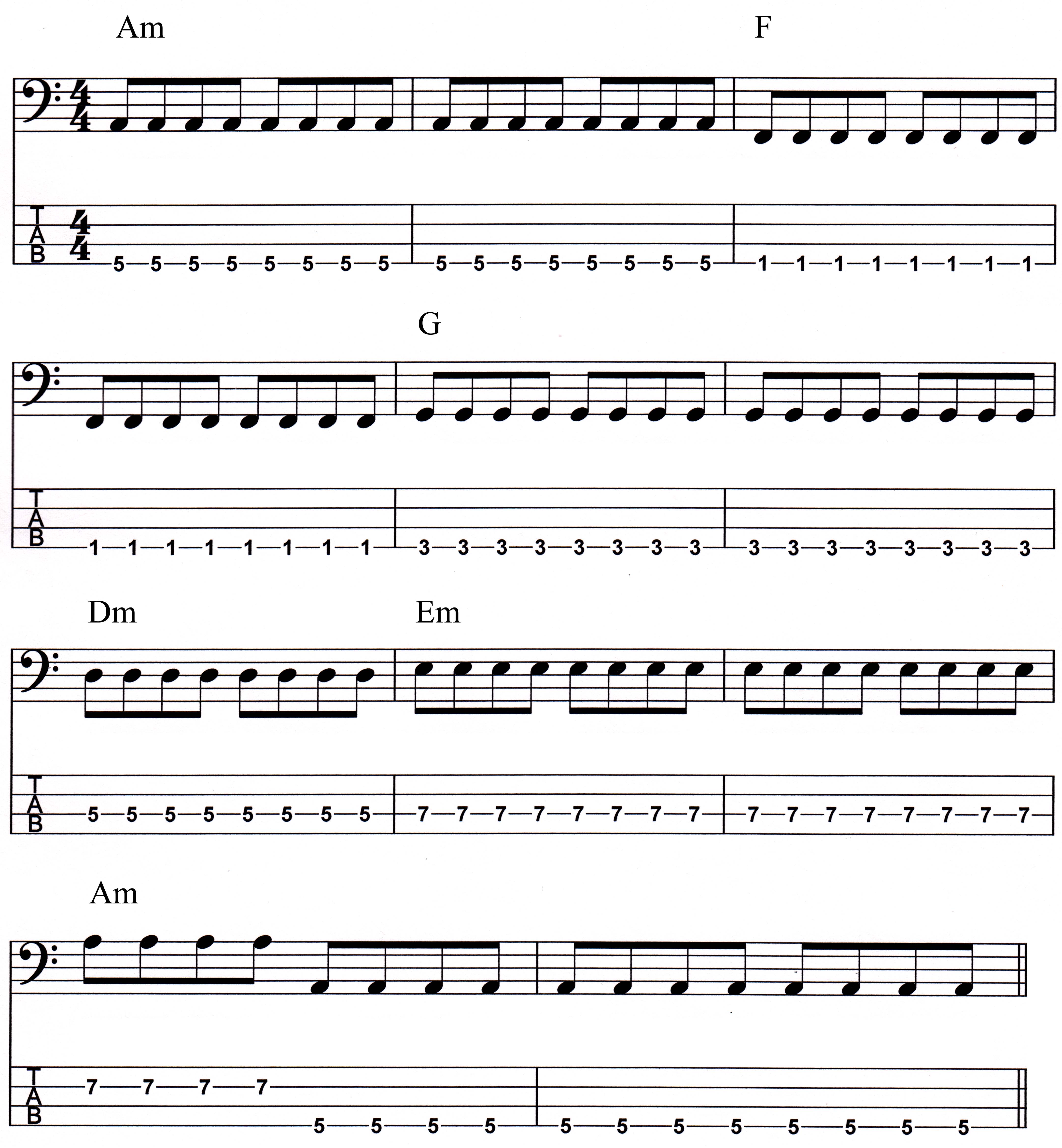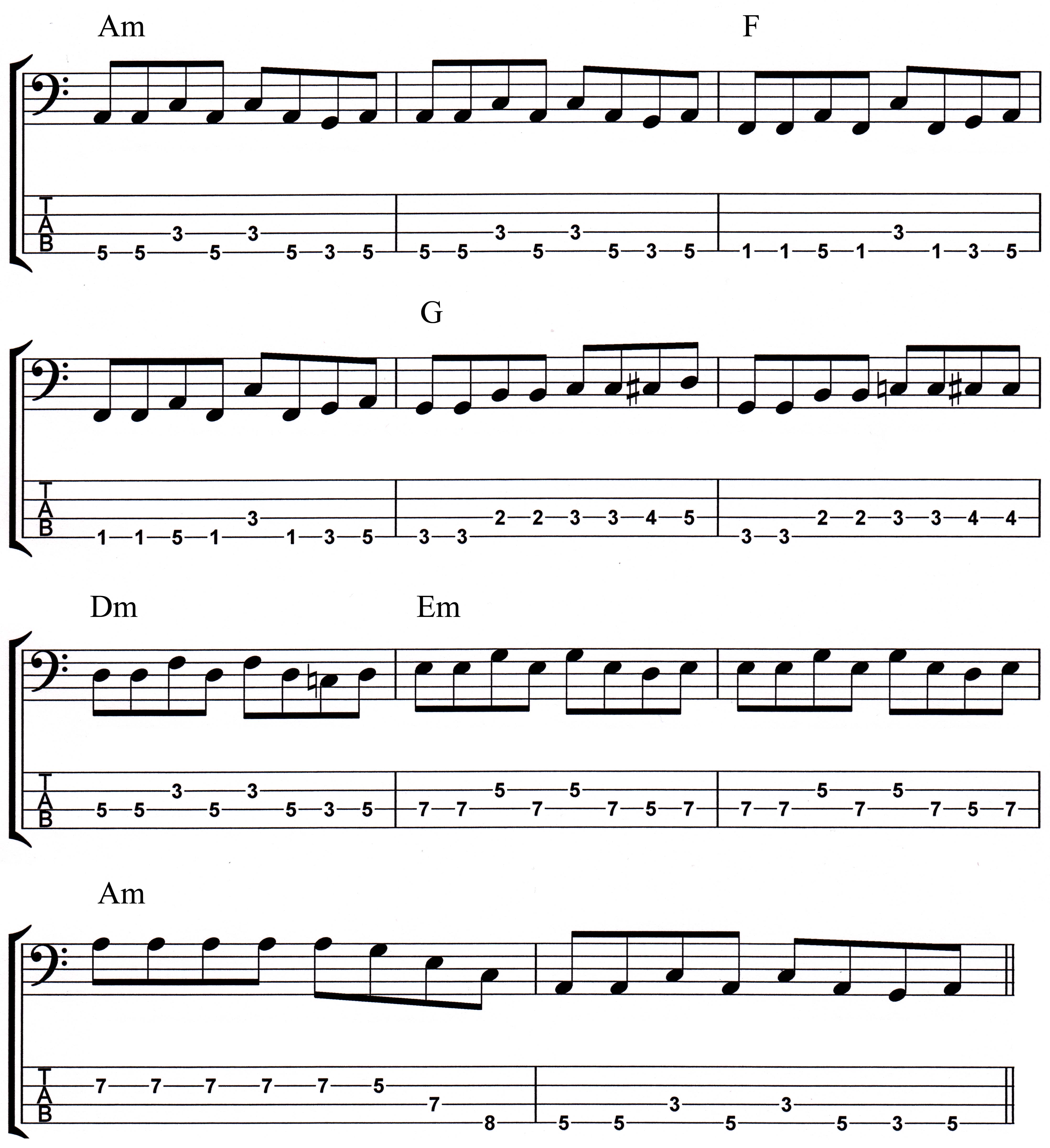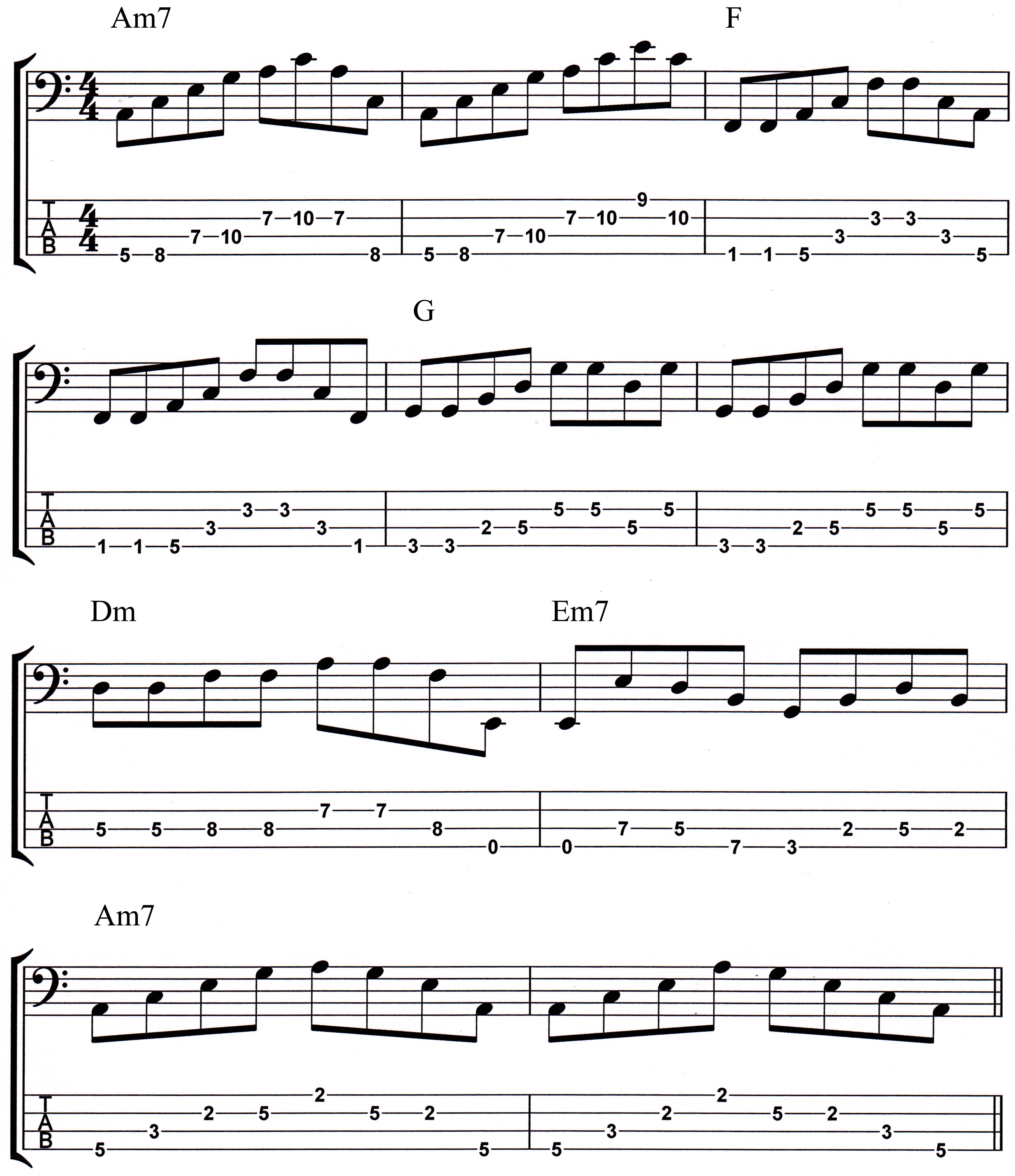
Arpeggios
In the first lesson of this series, we covered "Autumn Leaves", and also the basic foundations for playing this tune, using arpeggios of the chords being used in the
framework of the song. The truth is, for more accomplished players, arpeggios and scales are the basis for most of what you use to create and play your parts.
Scales you use to transition between positions and chord forms. Arpeggios of the chord(s) are what you play once you get there. It beats the heck out of thrumming
away on a root tone of the chord all night long. Yes, some songs sound better just holding down the "fort". But many songs that are played that way can benefit
from a 'facelift', which is to say, they can be altered to add more motion, colour and texture to the song as a whole, and what you play in particular. And you can
do this without ruining the integrity of the song - if you do it right!
So let's have some fun and take a basic progression and play it straight at first, then begin to process of "jazzing" it up. Yeah, we can borrow from other music
styles to create a more interesting part.
Look at Example #1 below, and play the straight eighths you might use in one incarnation of this progression.

Now examine the chords, how they're put together, and use that information to start the transformation of the bass part. The chords we're playing at the moment are: Am, G, F, Dm and Em.
Am: A, C, E (1,b3, 5)
G: G, B, D (1, 3, 5)
F: F, A, C (1, 3, 5)
Dm: D, F, A (1,b3, 5)
Em: E, G, B (1,b3, 5)
Now that we know what makes them tick, we can use that information to add more variety to what we play under the chords, but without clashing with them, as in
Example #2 below...

As you can see, this progression actually now has some motion going on, but doesn't undermine, or distract from, the drive of the chordal rhythms being played. While the eighth note foundation is still retained, as in the first example, we are now creating motion, not merely momentum, which pedal point eighths tend to emphasize over movement.
Now, let's actually start tweaking the chords. Instead of just Am, let's make it Am7 by adding a b7, the G. Now we've added more colour to the chord, thereby giving the bass (and other instruments) more information to draw from. Now, understand that in the second example, we already began adding that m7 tone in the mix, using the rule of substitutions (where if you're playing a minor chord, any version of that minor chord can be suggested, even played, as an alternative to the simple minor (1, b3, 5) chord.
So the Am is now Am7. We'll keep the Dm, but also change the Em to Em7 as well, adding a D to the basic Em chord. The F and G are majors and will remain so for now.
Now that we have more colour tones, Example #3 creates some true arpeggio playing with the bass part.

The main point here is not to overly complicate the supporting role of the bass in what it contributes to the music, but to create a more suitable degree of support harmonically to the overall character of the music, helping to give more definition to the tone and atmosphere of the music. It's like painting a portrait or landscape with sonic colour tones - shades of colour, not just flat primary colours (red, blue, yellow), for the ears.
Secondarily, you need to pay attention to the rhythm and cadence of the progression to help determine just how you can approach laying down a suitable supportive bass part that doesn't conflict with, but rather compliments, the overall feel and flow of the song.
Understanding chord theory, the structure of chords, and knowing what they are made of is critical to a bass player's ability to creaty more dynamic and musical passages. You will still want to play the simpler parts where they are more suitable to what's going on - sometimes momentum is more important than virtuosity - but it's nice to know that where the music allows, even encourages, greater musical expression, that you can bring something truly beneficial to the musical passages involved through the use of arpeggios. They will make the song come alive in a way you cannot imagine, once added to it, how the song ever got along without!
Of course, there's lots more on this subject. But for now, explore the possibilities, based on what you've learned here.
Next time!